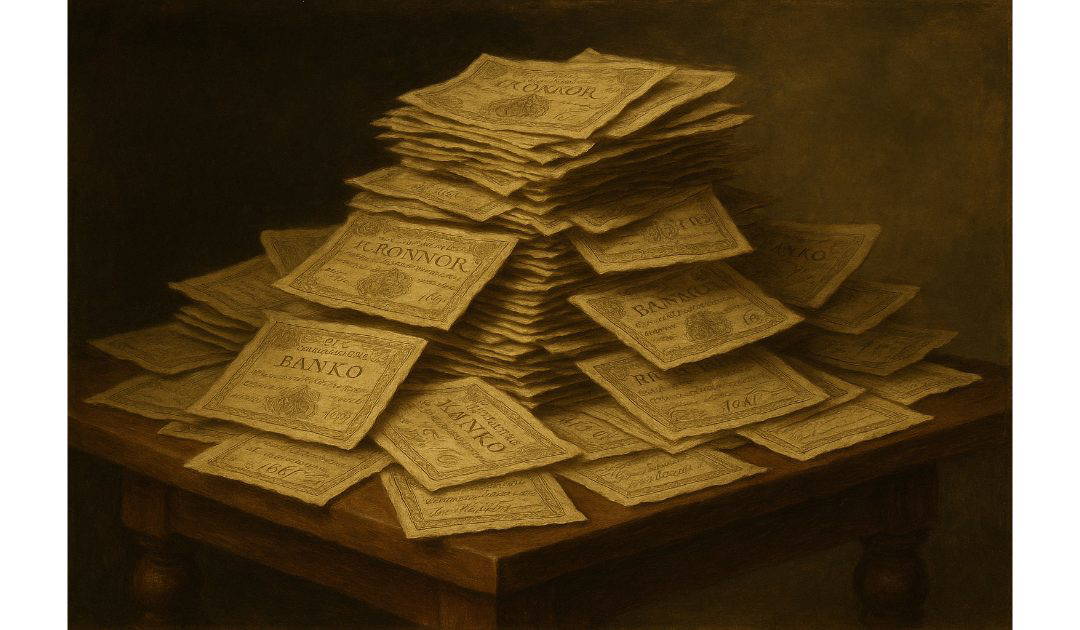On the 16th of July, 1661, the Swedish bank Stockholm Banco issued Europes first banknotes. I had wondered when folding money might appear in my books, the Sir Anthony Standen Adventures. My characters must tire of carrying all those ducats, pistoles and livres around.
The history of banknotes is a fascinating journey reflecting the evolution of commerce, finance, and economic systems worldwide. Banknotes, also known as paper money, have their origins rooted in ancient practices and have undergone remarkable transformations over centuries.
The earliest form of paper money dates back to 7th century China during the Tang Dynasty, though it became more widespread under the Song Dynasty in the 11th century. Merchants initially used promissory notes to avoid the burden of carrying heavy metal coins. These notes, known as “jiaozi,” represented deposits held by trusted agents. The government eventually recognised the utility of these notes and began issuing official paper money, thereby creating the first government-backed currency.
The concept gradually spread to the Middle East and Europe through trade routes. By the 13th century, the famed traveller Marco Polo documented his observations of China’s paper currency system, which fascinated and influenced European merchants and traders. However, it took several more centuries before paper money gained acceptance in Europe.
As already stated, Sweden became the first European country to issue official banknotes through Stockholms Banco, the precursor to the modern central bank. The primary motivation was to alleviate the inconvenience of using copper coins, which were bulky due to Sweden’s rich copper resources. Unfortunately, the bank’s poor management led to its failure, but the concept of banknotes endured.
The Bank of England, established in 1694, played a crucial role in popularising banknotes. Initially issued as handwritten promises to pay the bearer a specific amount, these notes gradually evolved into printed forms, enhancing security and standardisation. By the 18th and 19th centuries, many countries had adopted similar practices, with banks across Europe and North America issuing their own notes.
The proliferation of private banknotes in the 19th century led to financial instability and counterfeiting issues. This prompted governments to centralise currency issuance, leading to the establishment of national banks with exclusive rights to produce legal tender. For example, the United States created the Federal Reserve System in 1913 to regulate the issuance and stability of currency.
Technological advances in printing and security features became essential as counterfeit threats grew. Watermarks, security threads, microprinting, and holograms were introduced to enhance note security. The materials used also evolved; traditional cotton-based paper has been increasingly replaced by polymer substrates, which offer greater durability and security.
Today, banknotes not only serve as a medium of exchange but also reflect national identity through intricate designs featuring historical figures, landmarks, and cultural symbols. Despite the rise of digital payments, banknotes remain an integral part of the global economy, embodying centuries of financial innovation and adaptation.

